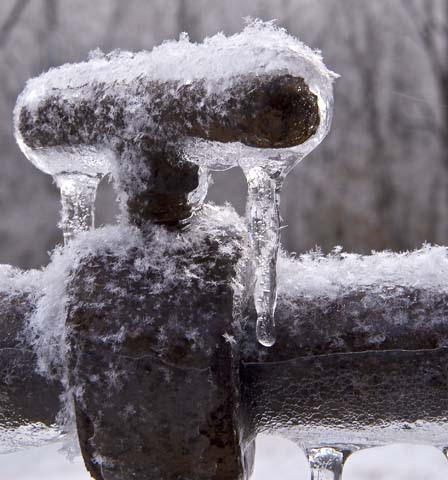Tips to Avoid Frozen Pipes in Cold Weather: Professional Tips
Start NowWhat're your ideas with regards to Helpful Tips to Prevent Frozen Pipes this Winter?

Cold weather can ruin your pipes, specifically by freezing pipes. Below's exactly how to avoid it from taking place and what to do if it does.
Introduction
As temperatures decrease, the danger of frozen pipelines boosts, potentially leading to pricey fixings and water damage. Recognizing exactly how to stop frozen pipelines is critical for home owners in chilly environments.
Understanding Frozen Pipes
What causes pipelines to ice up?
Pipes freeze when revealed to temperature levels below 32 ° F (0 ° C) for prolonged durations. As water inside the pipelines ices up, it expands, taxing the pipe walls and potentially creating them to break.
Dangers and problems
Icy pipelines can lead to water supply disruptions, residential or commercial property damage, and pricey repair services. Burst pipelines can flood homes and cause extensive structural damages.
Indicators of Frozen Piping
Identifying icy pipelines early can stop them from rupturing.
Exactly how to determine frozen pipes
Look for reduced water flow from faucets, unusual odors or sounds from pipelines, and visible frost on subjected pipelines.
Avoidance Tips
Protecting susceptible pipelines
Cover pipes in insulation sleeves or make use of heat tape to protect them from freezing temperature levels. Focus on pipelines in unheated or exterior locations of the home.
Heating techniques
Maintain interior areas adequately warmed, particularly areas with plumbing. Open cabinet doors to enable warm air to flow around pipes under sinks.
Shielding Exterior Pipes
Garden tubes and outside taps
Separate and drain pipes garden pipes prior to wintertime. Mount frost-proof faucets or cover outdoor faucets with insulated caps.
What to Do If Your Pipes Freeze
Immediate activities to take
If you believe frozen pipes, keep faucets open to relieve stress as the ice melts. Make use of a hairdryer or towels soaked in hot water to thaw pipes slowly.
Long-Term Solutions
Structural adjustments
Consider rerouting pipelines far from outside wall surfaces or unheated areas. Add added insulation to attics, cellars, and crawl spaces.
Updating insulation
Purchase top quality insulation for pipes, attics, and walls. Appropriate insulation assists preserve consistent temperature levels and lowers the threat of frozen pipes.
Conclusion
Stopping icy pipes needs aggressive procedures and quick feedbacks. By understanding the causes, signs, and preventive measures, house owners can safeguard their plumbing throughout cold weather.
6 Proven Ways to Prevent Frozen Pipes and Protect Your Home
Disconnect and Drain Garden Hoses
Before winter arrives, start by disconnecting your garden hoses and draining any remaining water. Close the shut-off valves that supply outdoor hose bibs and leave the outdoor faucet open to allow any residual water to drain. For extra protection, consider using faucet covers throughout the colder months. It’s also important to drain water from any sprinkler supply lines following the manufacturer’s directions.
Insulate Exposed Pipes
Insulating your pipes is an effective way to prevent freezing. Pipe insulation is readily available at home improvement stores and is relatively inexpensive. Pay close attention to pipes in unheated areas such as the attic, basement, crawl spaces, or garage. Apply foam insulation generously to create a buffer against the cold. You can also wrap your pipes in heat tape or thermostat-controlled heat cables for added warmth.
Seal Air Leaks
Inspect your home for any cracks or openings that could let in cold air. Seal any holes around the piping in interior or exterior walls, as well as the sill plates where your home rests on its foundation. Additionally, make sure to keep your garage door closed unless you’re entering or exiting. Leaving it open creates a significant air leak that can lead to frozen pipes.
Allow Warm Air Circulation
During cold snaps, it’s essential to allow warm air to circulate evenly throughout your home. Leave interior doors ajar to promote better airflow. Open kitchen and bathroom cabinets to help distribute heat consistently around the rooms. If you have small children or pets, be sure to remove any household chemicals or potentially harmful cleaners from open cabinets for safety.
Let Faucets Drip
A small trickle of water can make a big difference in preventing ice formation inside your pipes. When temperatures drop significantly, start a drip of water from all faucets served by exposed pipes. This continuous flow helps prevent the water from freezing. Additionally, running a few faucets slightly can relieve pressure inside the pipes, reducing the chances of a rupture if the water inside does freeze.
https://choateshvac.com/6-proven-ways-to-prevent-frozen-pipes-and-protect-your-home/

I was made aware of that report on How To Avoid Freezing Pipes through someone on our other web property. Enjoyed reading our blog? Please share it. Let other people check it out. I value your readership.
Call Today